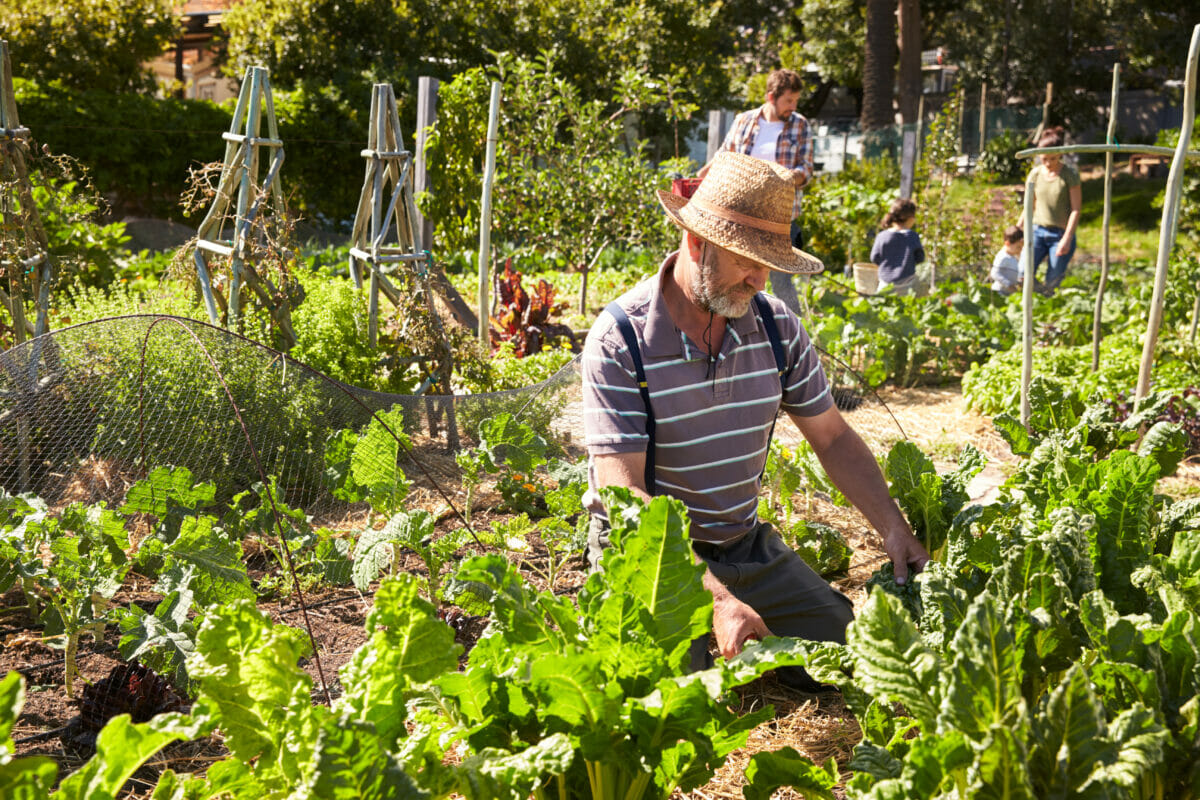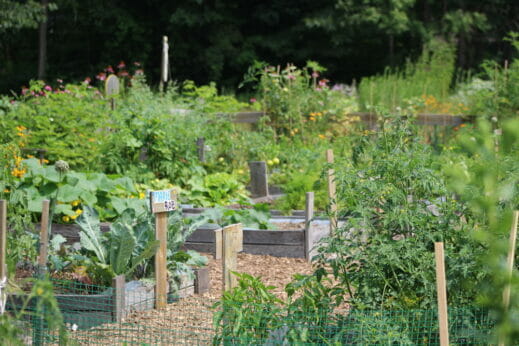With food inflation outpacing inflation overall and grocery bills squeezing shoppers, some are finding relief in an unexpected place: their local communal garden.

When Mark Joseph began noticing reports about food prices climbing due to inflation and other economic factors, he started looking into options on how to cut food costs. Joseph, a small-time farmer and parenting coach, quickly zeroed in on communal gardening. “Growing my food seemed like a cost-effective way to feed my family rather than buying expensive produce at the grocery store,” he says.
Communal gardening is the practice of growing food in a collectively shared space. Communal gardens can take many forms, from plots of land rented out to individuals to urban farms where groups of people work together to grow food. But they all share resources and farm production costs, as well as a sense of community and purpose.
As the world’s population continues to grow, putting pressure on our food systems, food inflation has become an increasingly pressing issue. The steady rise in the cost of food makes it difficult for people—especially those in low-income households—to access the food they need to stay healthy.
Food prices in the US generally increased about 2 percent annually over the last decade. From 2021 to 2022, they jumped about 11 percent, in the largest annual increase since the 1980s. Global disruptions to the food supply chain, along with inflation, contributed to the increase. And while the increase in food prices has slowed, food inflation is still outpacing inflation overall, and grocery bills remain higher than last year.
Communal gardening has the potential to help cut food costs by offering members of a community the space to collectively grow produce while sharing the financial and emotional burden that goes into growing food.
Joseph joined a local community garden project just outside St. Louis, Missouri, in a small town called Creve Coeur. This was a straightforward process, he says, noting that most communal gardens do not have a ton of rules.
“All I had to do was show interest and, within a few weeks, I was in and discussing responsibilities,” he says. “For most communal gardens, new members are typically required to live in the area and also be able to afford buy-in fees and upcoming maintenance fees. If you have that and a willingness to play your part, you’re more than welcome in.”
Joseph paid $5,000 for his share of the overall farm production, a fee that was split among all seven project members. This fee included the cost of land, initial tools and supplies and other costs associated with setting up the garden.

Communal gardens can take many forms, from plots of land rented out to individuals to urban farms. (Photo: Shutterstock)
Zahid Adnan’s interest in communal gardening was more community-based. A New York-based horticulturist and the founder of The Plant Bible, Adnan was drawn to the idea of collaborative farming for its community-based approach to resource sharing and food production.
“The pandemic situation in 2020 reminded me of the importance of community and people helping each other out, so I decided to buy into a farm so I could be a part of it,” he says.
This is an added benefit of communal gardening, in addition to lessening financial burdens and promoting sustainable agricultural practices. “I believe in nurturing the land and preserving its natural resources for future generations. Communal gardening can be a way to do that,” says Adnan. “It’s not just about growing crops but also fostering a healthy ecosystem that supports the overall well-being of the environment, community and consumers.”
But working with large groups of people isn’t always fine and dandy, says Alexia Allen, who runs Hawthorne Farm, an eight-acre communal homestead in Woodinville, Washington. “There’s been quite a few learning curves such as over-enthusiastic or uncooperative members, so it helps to really establish boundaries. Part of what makes the system work is clear communication and everyone’s participation.”
Like Joseph, Allen has seen a significant reduction in her grocery bill. “Small-scale cultivation is a pretty time-tested way of humans making a life and a living,” she says. “In 2017, my husband and I went an entire year eating only hand-harvested food, so we have a sense of what it takes to feed ourselves year-round from this particular landscape.”
Hawthorne Farm is designed to meet the year-round food needs of its members and Allen states that you’d be right to call it a homestead. “Our aim is good food within walking distance for everyone. This goal builds resilience in our food supply,” she says. “We can harvest food fresher than anything we can buy, and we get a gentle workout to do it. Farming communally also means that if any of us isn’t able to attend to our duties for a while, we can fill in for each other. Keeping the farm within a human scale makes that possible.”
But while communal gardening can provide a way to cut food costs, it isn’t a silver bullet. “Communal gardening is great, but, as of right now, it isn’t feasible for everyone,” says Dylan Jarvis, a member of a communal project in Halifax, Nova Scotia. “There are so many barriers we need to fix first.”
To begin with, the cost of buying into communal farms could be out of reach to people in low-income households—the demographic that would most benefit from them. Jarvis paid CAD$3,000 to be a part of her garden. “Communal gardens take time to yield results and, with the rising cost of living, that’s not an investment that some people can readily make,” she says. “It also takes effort—a lot of it.”
A typical day for Jarvis involves spending at least three hours at the farm. In the early days when the farm was just starting out, she tells us it took way more time and her day job often interfered with the work she needed to do at the farm.
“Food inflation is such a complex issue and many factors go into exacerbating it. Communal gardening has definitely helped our community financially and helped to assuage the effects of food inflation, but it cannot do it all,” she says.
For some people, the upfront fees and ongoing effort are worth it. It’s been two years since Joseph joined the communal project in Missouri, and he estimates that being part of it has reduced his grocery bill by approximately 40 percent. “The cost was well worth it. I can now enjoy access to healthy food that is much less expensive than store-bought produce,” he says.
But the reduced cost is just one of many pros for Joseph. “The added sense of community is superb. I’ve made new friends in the community as well as introduced my kids to gardening,” he says. “I take great pride in providing fresh and healthy produce for my family with the work of my hands.”
I like the idea of communal gardening. Sounds great. But Creve Coeur is a wealthy community (about $100K per family annual income). Given the initial investment in land (which, incidentally, may well be polluted in most urban areas due to industrial smoke, motor vehicle exhaust, past use of lawn care products, etc.) and equipment, plus the amount of time each participant must invest in gardening (Jarvis, in Nova Scotia, spends 3 hours a day and complains that “her day job often interfered with the work she needed to do at the farm” LOL), this type of project is out of… Read more »
I’ll pass. Never know if someone might help themselves to the best produce late at night. Have my own little garden.